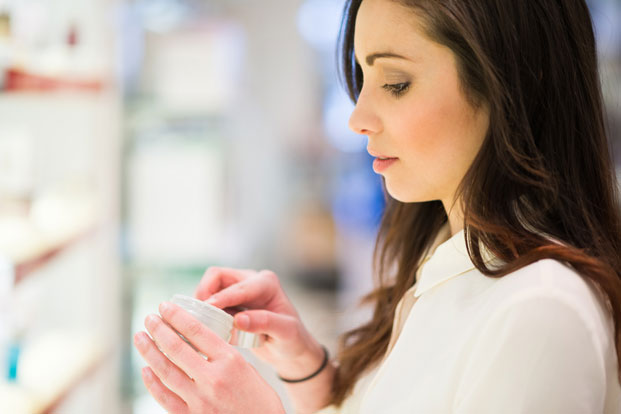It’s a glorious day, and you’re heading to the beach. You have your flip-flops, beach ball, favorite hat, umbrella, blanket, and a picnic cooler filled with snacks and beverages. Oh, yes, and you have sunscreen.
But do you have the right sunscreen? The answer may surprise you because it’s a highly subjective answer that depends on several factors. Getting it wrong may not provide the protection from the sun’s ultraviolet rays and could cause skin damage. Worse, long-term misjudgment of the type of sunscreen you choose could lead you down the path to skin cancer.
The Skin Cancer Institute, a research organization dedicated to studying the disease, estimates that nearly 5 million people are treated for skin cancer each year. That’s more than the combined total of lung, breast, colon and prostate cancers. For the past three decades, more people have contracted skin cancer than all other cancers combined, and it’s estimated that 20 percent of Americans will get skin cancer during their lifetime. About 3,000 people will die in the United States this year from skin cancer.
Part of that enormous problem is that few people can determine how well a sunscreen will protect them from skin cancer, sunburn or premature aging (sometimes referred to as photoaging). Less than half of 114 research study participants in a test conducted by the Northwestern University Feinberg School of Medicine in Chicago could say which sunscreen offered the best protection. Less than half could tell you what “SPF” stands for (for the record, it’s “sun protection factor”).
It Isn’t Your Fault
Part of the problem in deciphering the information is that current sunscreen bottle labels look different than they did before 2012. That’s when the government realized that there was more to describing sun protection than limiting one particular type of ultraviolet ray.
Before 2012, manufacturers only had to put the SPF rating on the bottle. That told people how well the product is anticipated to protect against ultraviolet B rays, or UVB rays. Those are the ones that cause sunburns and the other maladies. An SPF 30 will filter out roughly 97 percent of damaging rays, while SPF 50 cuts out 98 percent of them.
Keep in mind that this isn’t a real numbers game, and there’s no such thing as an invincible shield against sun damage, no matter what number is on the bottle. Most SPF 30 sunscreens basically offer the maximum protection levels you can attain. After all, the difference between SPF 30 and SPF 50 is 1 percent. Even if you go up to SPF 100, you may wind up – that’s may – with protection in the 99 percent range. But that’s not a license to spend hours and hours in the sun because any prolonged exposure can defeat the chemical barrier you think you’ve erected. The sun is relentless and always “on” during the day, so any exposure counts against your daily total.
In fact, the Food and Drug Administration has called SPF labels touting 50 or higher protections to be “inherently misleading.” Countries in Europe, plus Japan and Canada, agree and prohibit anything being labeled higher than SPF 50.
Worse, while higher ratings may give some indication of better protection against UVB rays, they do little to tell you how much they guard against ultraviolet A rays, which can cause photo aging and lead to skin cancer. Your ethnicity, skin tone and age are also factors in what provides the best skin care. Toddlers have different needs than adults, while those whose skin is dry may have a different requirement than the acne-covered teenager.
What’s Best for You?
The key is determining which sunscreens provide so-called “broad-spectrum” protection against both UVB and UVA rays. These have been certified by the United States Food and Drug Administration to provide protection against both types of sun damage.
The FDA has approved 17 sunscreen ingredients that provide protection against ultraviolet rays. They include both physical substances and chemicals, including para-amino benzoic acid, or PABA) and cinnamates, zinc oxide and titanium oxide
Beyond that, sun worshippers should be aware of other steps they can take that will help them in the battle against damage from exposure.
You should reapply your sunscreen about every two hours or more often after you go swimming (even if the item claims it’s water-resistant). It’s also smart not to expose yourself during the middle hours of the day, which are the peak hours for sun radiation. And if you’re not actively seeking out the sun, cover up. Use an umbrella and wear long sleeves, pants, sunglasses and a hat to guard against the rays.
If you have a history of skin cancer or extremely fair skin, you should always reapply every two hours with a sunscreen that’s at least SPF 30. It’s important to slather it on because you need to put enough on to achieve the goals of the product’s protections. If you have darker skin, you may not put enough on because you’re afraid of the chalky look that comes with a large application. Fortunately, newer products blend better and disappear, so look for products that tout they are “micronized,” which means they will disappear when rubbed into the skin.
Older sunbathers should be assisted in putting on the proper amount of sunscreen, as many of them have a hard time with mobility and can’t reach certain areas of the body. Even though older people have already had considerable exposure to the sun during the course of a lifetime, it’s still important for them to guard against exposure because of the dangers of skin cancer.
Whatever product you choose, make sure you are rigorous in your application and limit your direct exposure to the sun. Even the best SPF rating is no guarantee of complete protection, so take some time out of the direct rays while you enjoy the rest of your outdoor experience.

Leave a Reply